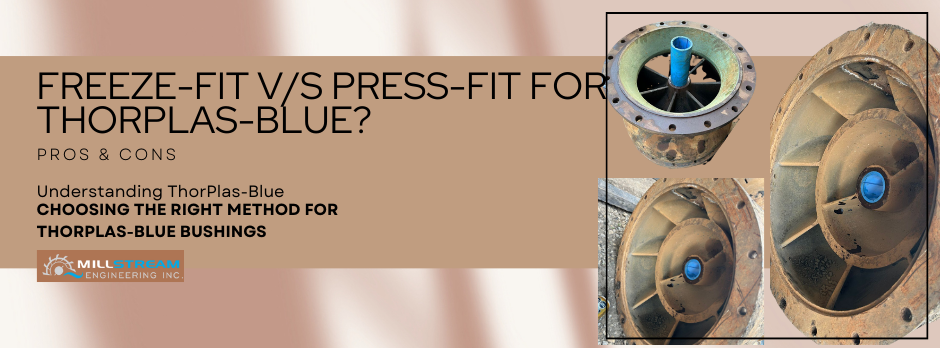Freeze-Fit vs. Press-Fit for ThorPlas-Blue? Pros & Cons

Freeze-Fit vs. Press-Fit for ThorPlas-Blue? Pros & Cons

Understanding ThorPlas-Blue
Freeze-Fitting ThorPlas-Blue Bushings with Dry Ice or Liquid Nitrogen Vapor
Minimal Stress
Freeze-fitting places minimal stress on the polymer bushings, preserving their mechanical properties and dimensional stability.
Precision
Both dry ice and liquid nitrogen methods allow precise control over interference fits, ensuring secure and accurate installation.
Ease of Assembly
The process is relatively straightforward and accessible, requiring minimal specialized equipment or training.
Uniform Cooling
Freeze-fitting ensures uniform cooling, achieving consistent interference fits, even for complex components.
Safety Concerns
Handling dry ice and liquid nitrogen poses safety risks, including skin burns and cold-related injuries.
Availability
Access to dry ice or liquid nitrogen may be limited in some areas, affecting feasibility.
Equipment & Expertise
Specialized equipment and training may be necessary, and the process can be time-consuming.
Press-Fitting ThorPlas-Blue Bushings

Versatility
Suitable for various applications, including those where temperature control is challenging.
Speed
Generally faster, making it suitable for high-volume production.
Precision
With careful control, precise interference fits can be achieved, ensuring a secure connection.
Cost-Effective
Often cost-effective, as it doesn't require specialized consumables or equipment.
Ease of Assembly
The process is straightforward and accessible, requiring minimal training or expertise.
Stress Generation
Press-fitting can generate localized stresses in the bushing, potentially affecting performance.
Equipment Requirements
Specialized equipment may be needed, which can be costly and impractical for some operations.
Risk of Damage
Improper execution can damage the bushing or mating components, increasing costs and time.


